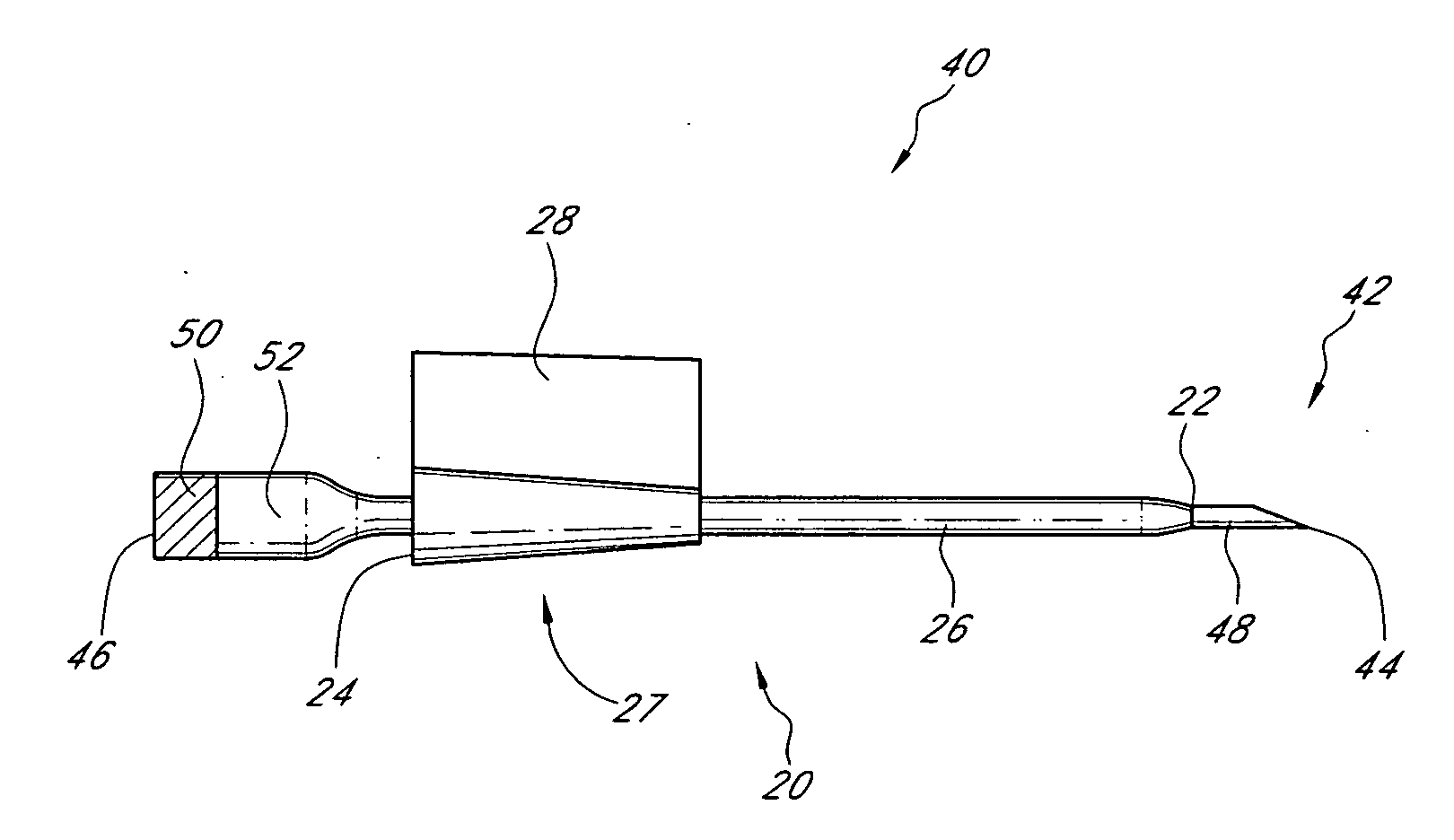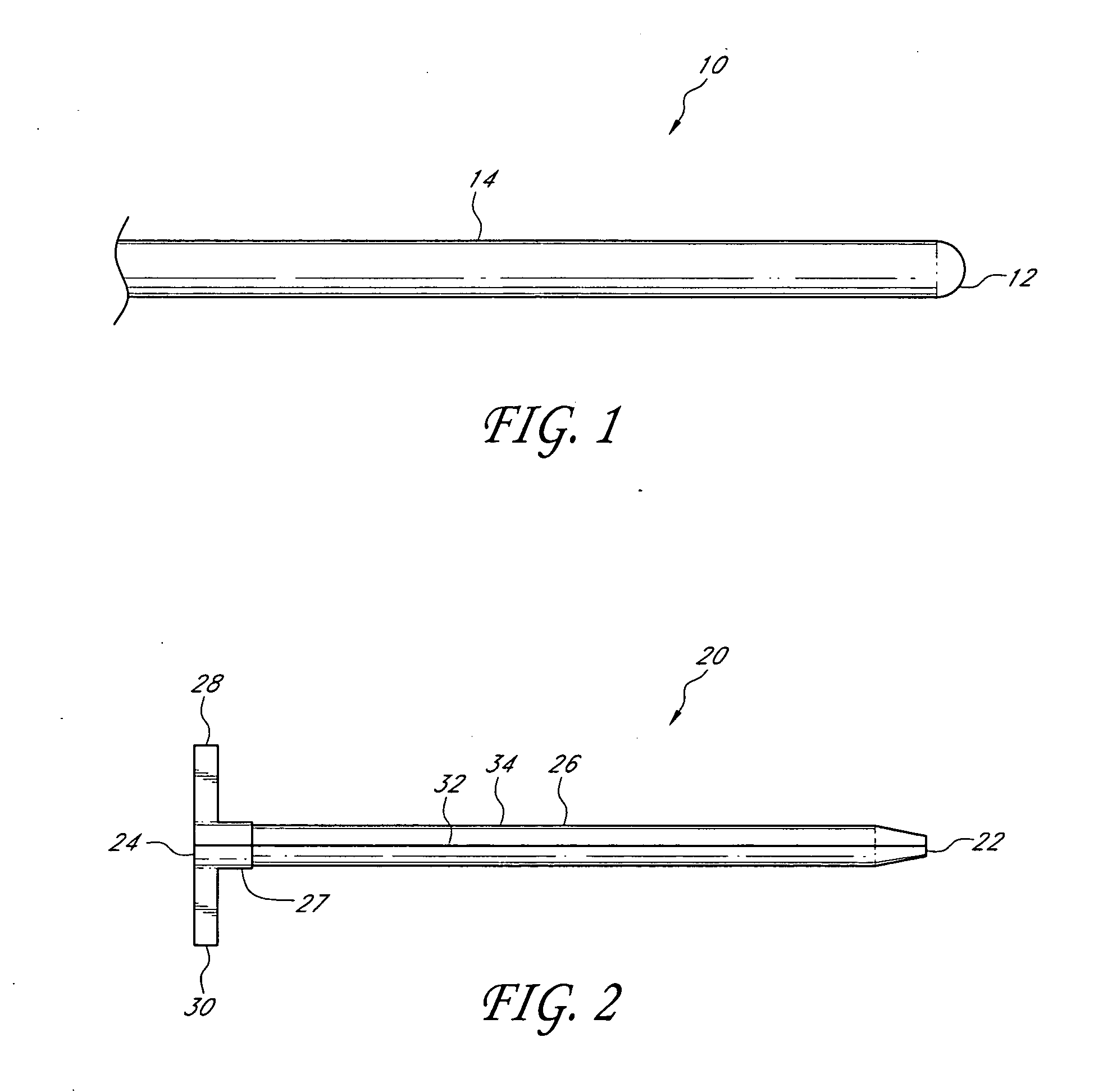Sensor for percutaneous intravascular deployment without an indwelling cannula
a technology of percutaneous intravascular deployment and sensor, which is applied in the field of intravascular residence sensors, can solve the problems of insufficient vivo, inconvenient deployment, and inability to monitor glucose levels in real time, and achieve the effects of reducing the burden on diabetics, patients and hospital staff, and reducing the number of sensors
- Summary
- Abstract
- Description
- Claims
- Application Information
AI Technical Summary
Benefits of technology
Problems solved by technology
Method used
Image
Examples
examples
[0047]In some embodiments, a fiber-optic glucose sensor can be inserted into a blood vessel or an interstitial space of the patient as described herein. The glucose sensor comprises an optical glucose measurement system that measures glucose concentration levels using glucose-sensing chemical indicator systems. Such indicator systems preferably comprise a fluorophore operably coupled to a glucose binding moiety. Preferably, the glucose binding moiety acts as a quencher with respect to the fluorophore (e.g., suppresses the fluorescent emission signal of the fluorophore in response to excitation light when it associates with the fluorophore). In preferred embodiments, as the glucose binding moiety binds glucose (e.g., as glucose concentrations rise), it dissociates from the fluorophore, which then generates a fluorescent emission signal upon excitation. Accordingly, in such embodiments, the higher the glucose concentration, the more glucose bound by the binding moiety, the less quench...
PUM
 Login to View More
Login to View More Abstract
Description
Claims
Application Information
 Login to View More
Login to View More - R&D
- Intellectual Property
- Life Sciences
- Materials
- Tech Scout
- Unparalleled Data Quality
- Higher Quality Content
- 60% Fewer Hallucinations
Browse by: Latest US Patents, China's latest patents, Technical Efficacy Thesaurus, Application Domain, Technology Topic, Popular Technical Reports.
© 2025 PatSnap. All rights reserved.Legal|Privacy policy|Modern Slavery Act Transparency Statement|Sitemap|About US| Contact US: help@patsnap.com



